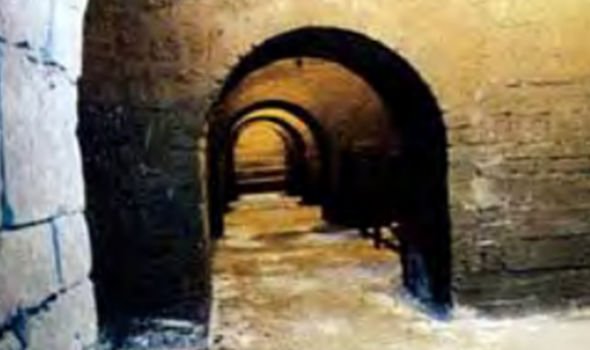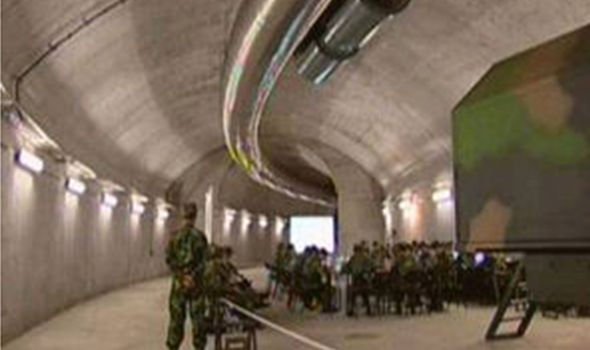Hidden for 1,000 years-“Underground Great Wall” of China
The Song Dynasty (960AD-1127AD) battled for 200 years with the Liao and Jin Dynasties, which at the time were ruled by minorities of China’s Northern Territories, the Khitans, and Jurchens respectively.
The battleground was an endless flat ground, with no mountains or rivers that could be used to help defend against attack, but their secret was found more than half a century ago, when locals in the Yongqing village, Hebei, experienced a great flood.
Villagers were running for their lives when the course of the flood suddenly diverted and disaster was averted – exposing a series of underground passages spanning more than 300 square kilometers (115 square miles).
Experts in China discovered the Yongqing ancient war passages were widespread and formed part of a large-scale construction used to house troops during times of war.
The structure of the caves was complicated and possessed advanced military facilities such as camouflaged exits, covers, and locking gates. More recently though, the existence of a modern “underground Great Wall” tunnel network was unveiled in the mountainous regions of Hebei.
The labyrinthine tunnel system was built by the engineering unit of the Second Artillery in 1985 for concealing, mobilising and deploying China’s growing arsenal of nuclear weapons.


Who Built the Ancient War Passages and When?
Experts discovered that the Yongqing ancient war passages were widespread. They were in fact a large-scale construction used to house troops during times of war.
The structures of the caves were complicated and complete, possessing military facilities such as camouflaged exits, covers, and locking gates. Facilities for housing people were also found, such as ventilation holes, lampstands, and heatable brick beds.
The “blue bricks” used in the construction of the passageways were 30×16×8 cubic centimeters in size. This kind of brick, created using fine soil baked at high temperatures, was very solid and robust; the use of such facilities suggests a well thought out and sophisticated underground network had been established at some point in time.

Further investigation revealed that the blue bricks found in Yongqing County were the same as the bricks found in underground passages in Qigang, Xiong County from the Song Dynasty.
The creation and maintenance of such a massive underground network required a great number of these bricks. It is believed that these ancient war passages were constructed as part of a large nation-wide project created and overseen at a national level by the governing authorities of the time.
The Passages Spread Over 1,600 Square Kilometers
Experts have dug out similar war passages in Yongqing, Xiong county, and Bazhou. The ancient war passages are about 65 kilometers from east to west, 25 kilometers from north to south, which extend through 1,600 square kilometers.
When the border between the Song Dynasty and the Liao Dynasty went as far west as Rongcheng county and Xushui county, it is thought that many ancient war passages existed in that area. How far the ancient war passages extended eastwards from Yongqing is still unknown.

Hiding Soldiers in the Ancient War Passages to Defend the Country
Amidst many legends about the underground network, one states that the ancient war passages were built by General Yang and his family; a family that produced three great generals over three generations.
Another legend suggests that General Yang Liulang used the underground passageways to defend the border. At the time (960-1127 AD), soldiers of the Liao Dynasty strictly guarded the lands north of Yongqing County. It is said that Yang Liulang built the passages to hide his soldiers underground so they could quickly defend against attacks launched by the Liao soldiers.

Experts point out that the underground passages may have been used as a base for launching attacks during wars fought in ancient China. As a means of defense throughout the years, people have built great walls in mountainous areas and water fields near rivers and lakes to block cavalries.
However, in the open plains, where it is difficult to use the terrain as a means of defense, the tunnels would have allowed soldiers to travel unseen below the earth.
The ancient war passages have become famous for the advantages they provide whether the troops are attacking or defending, and they have been named the “underground Great Wall.”






